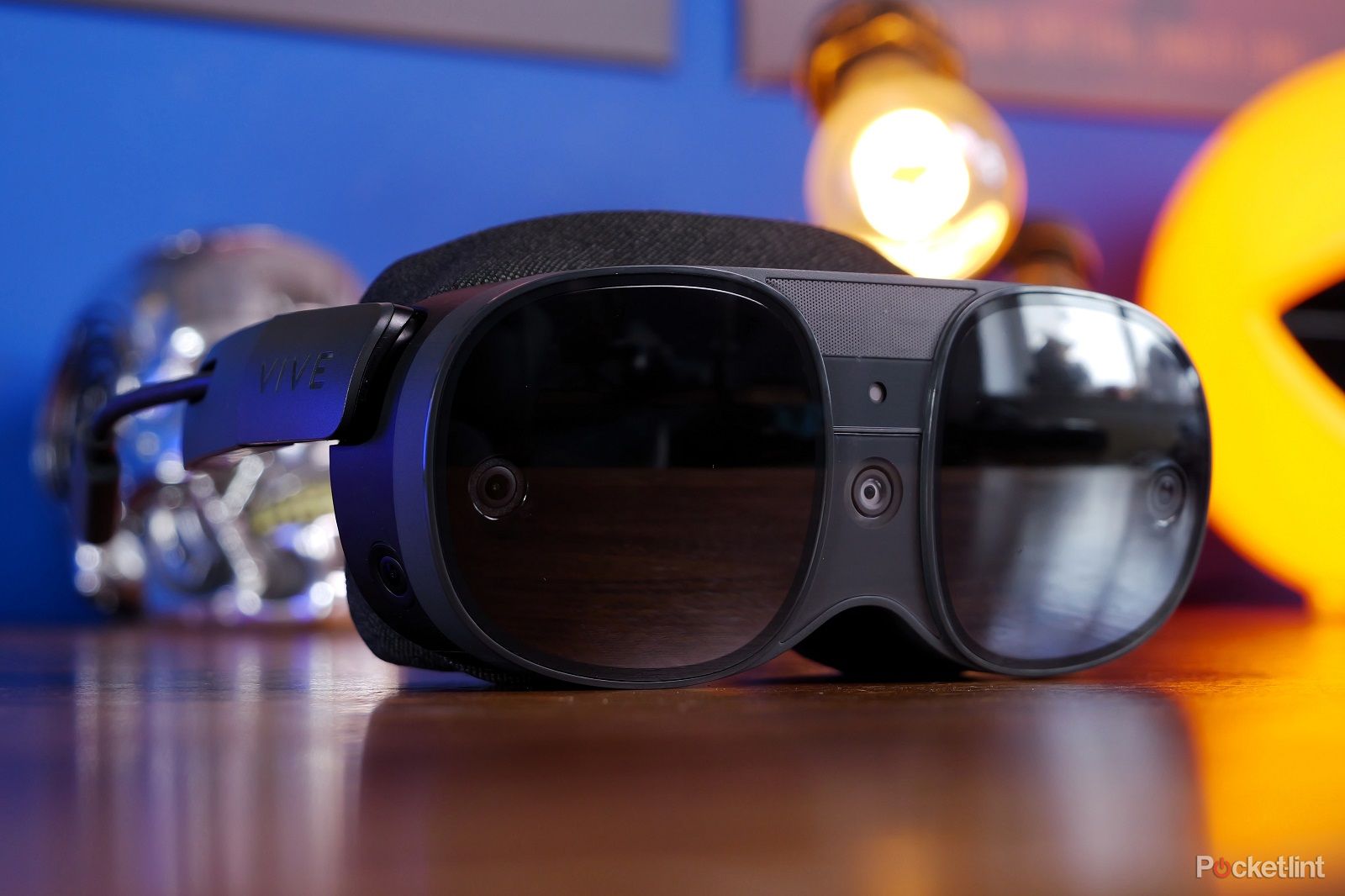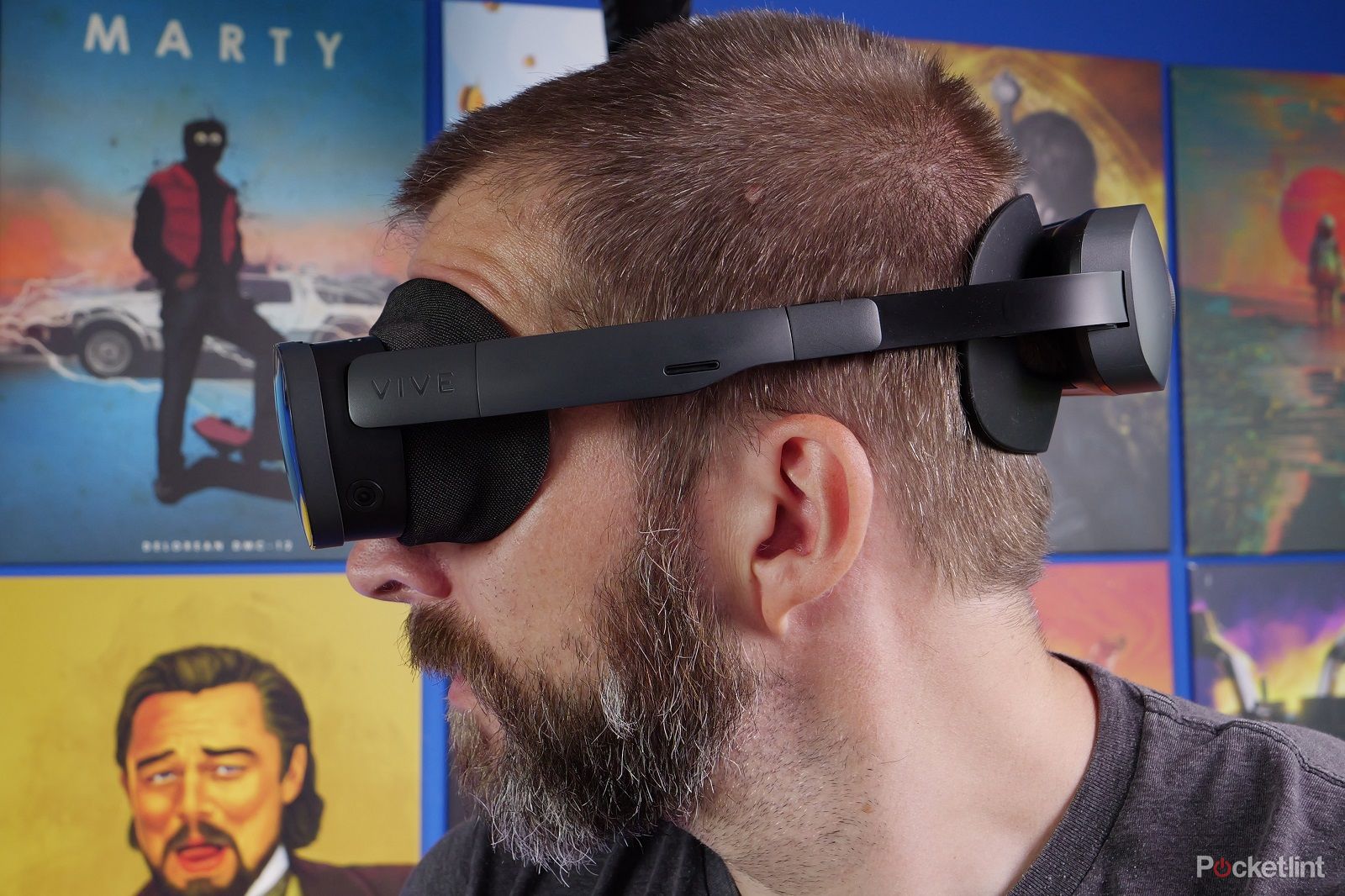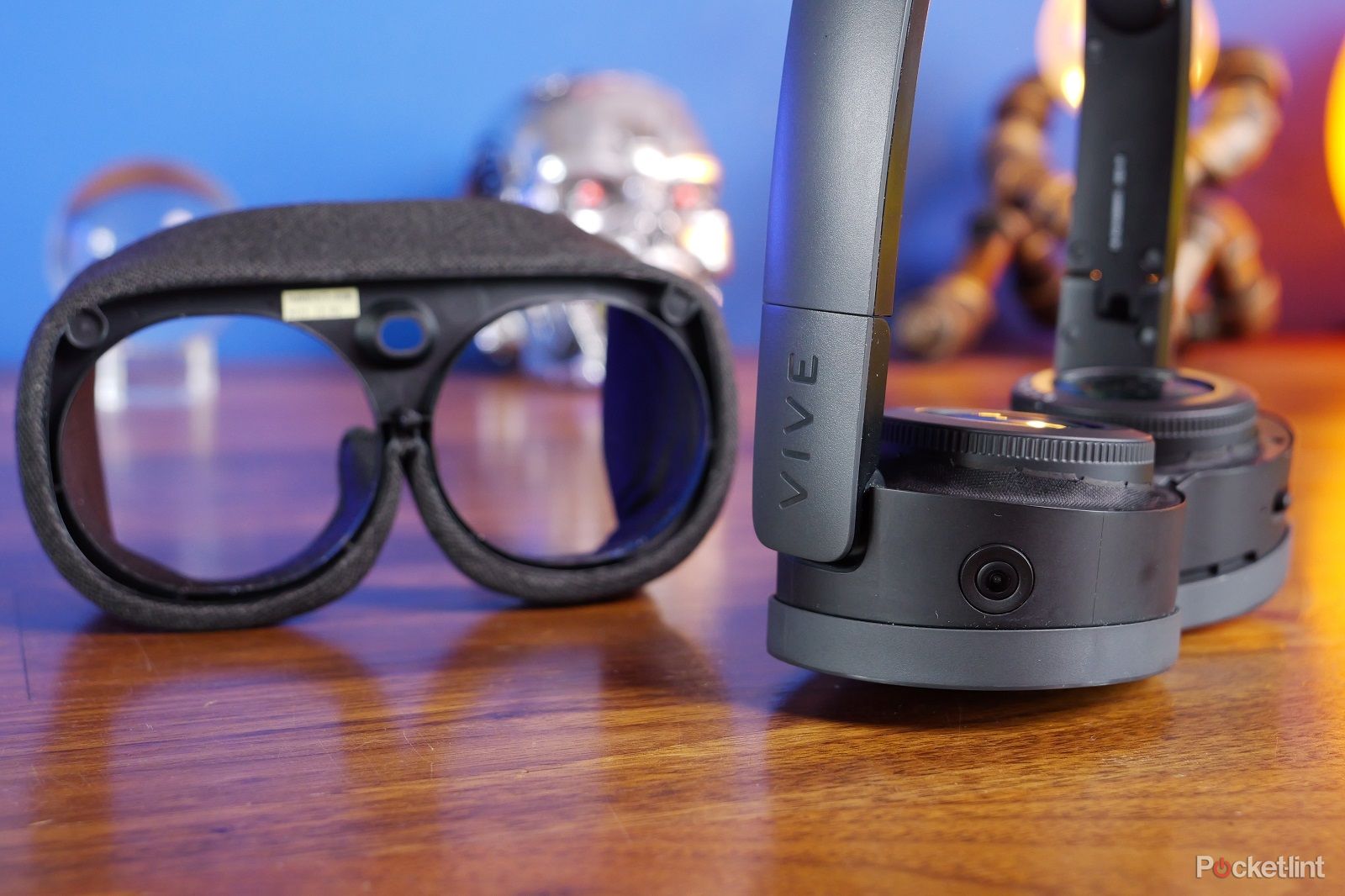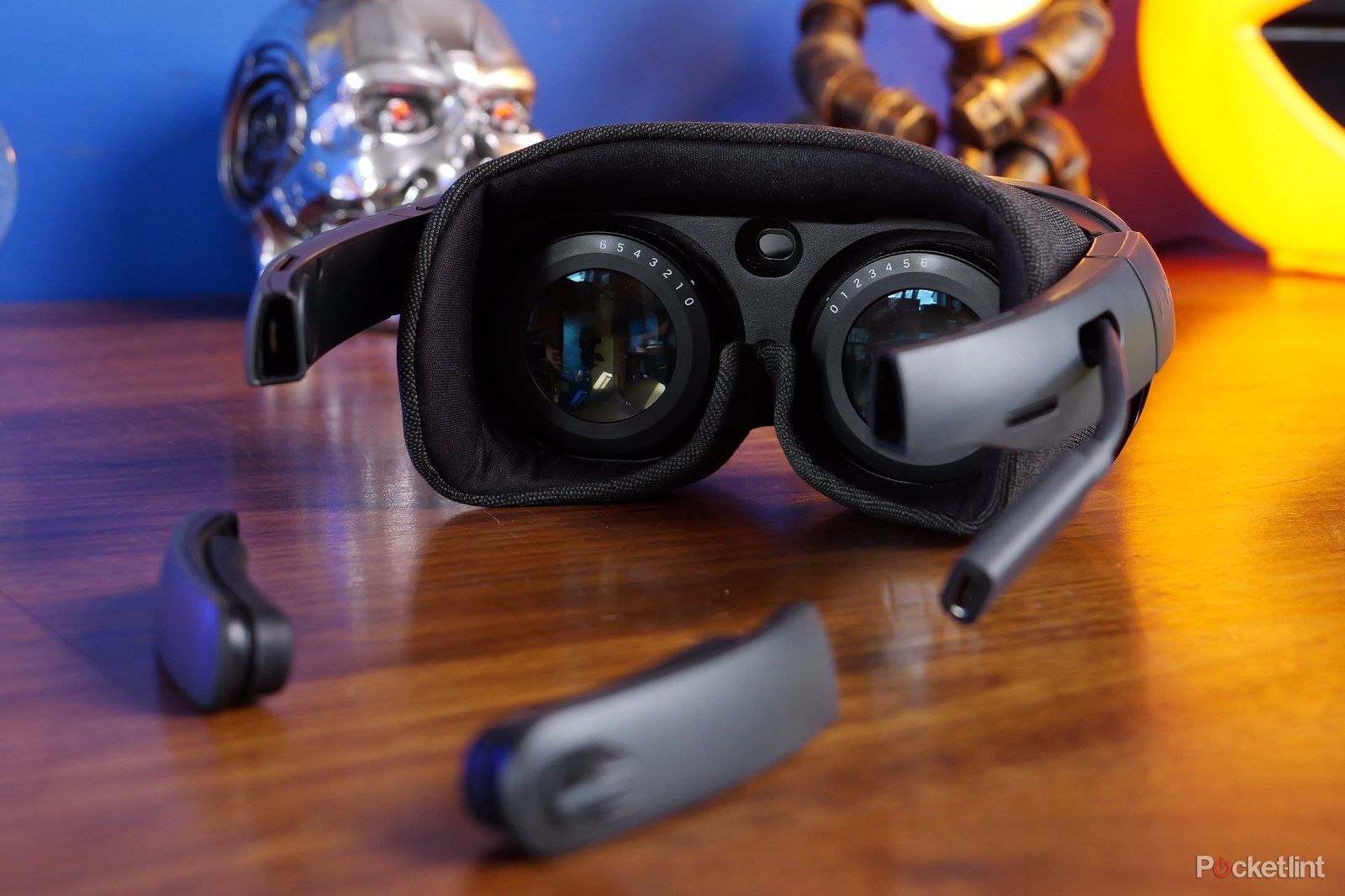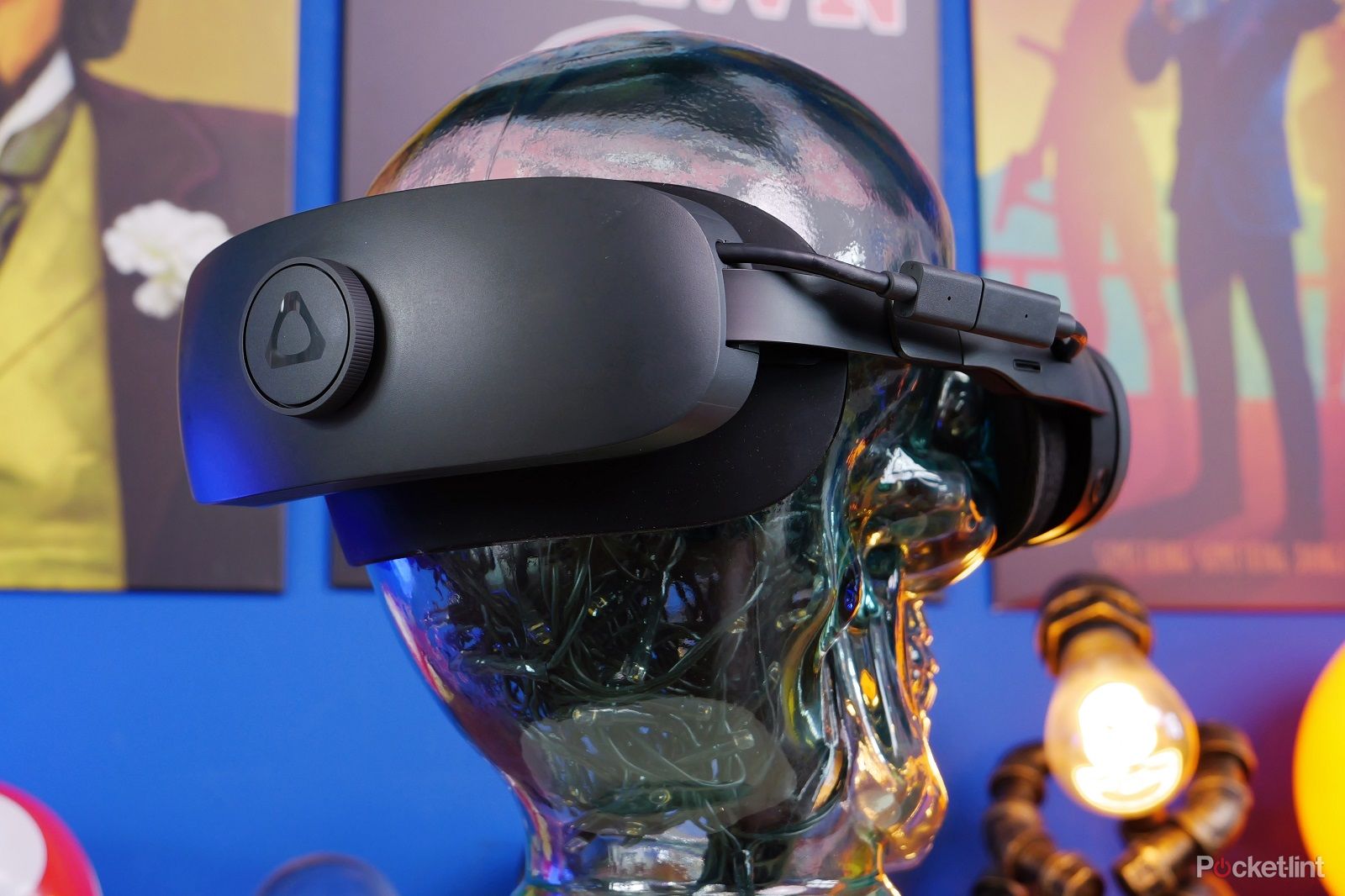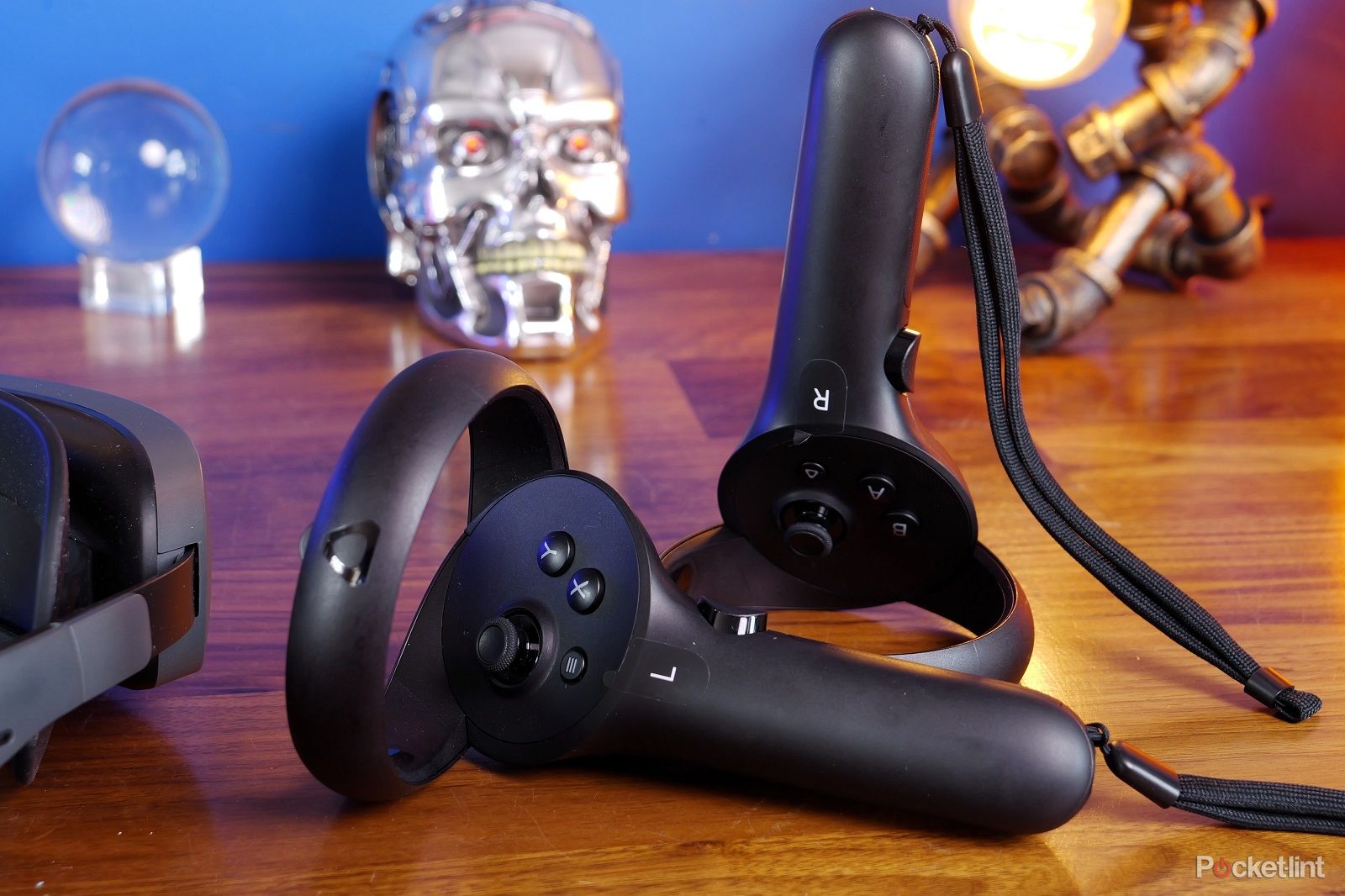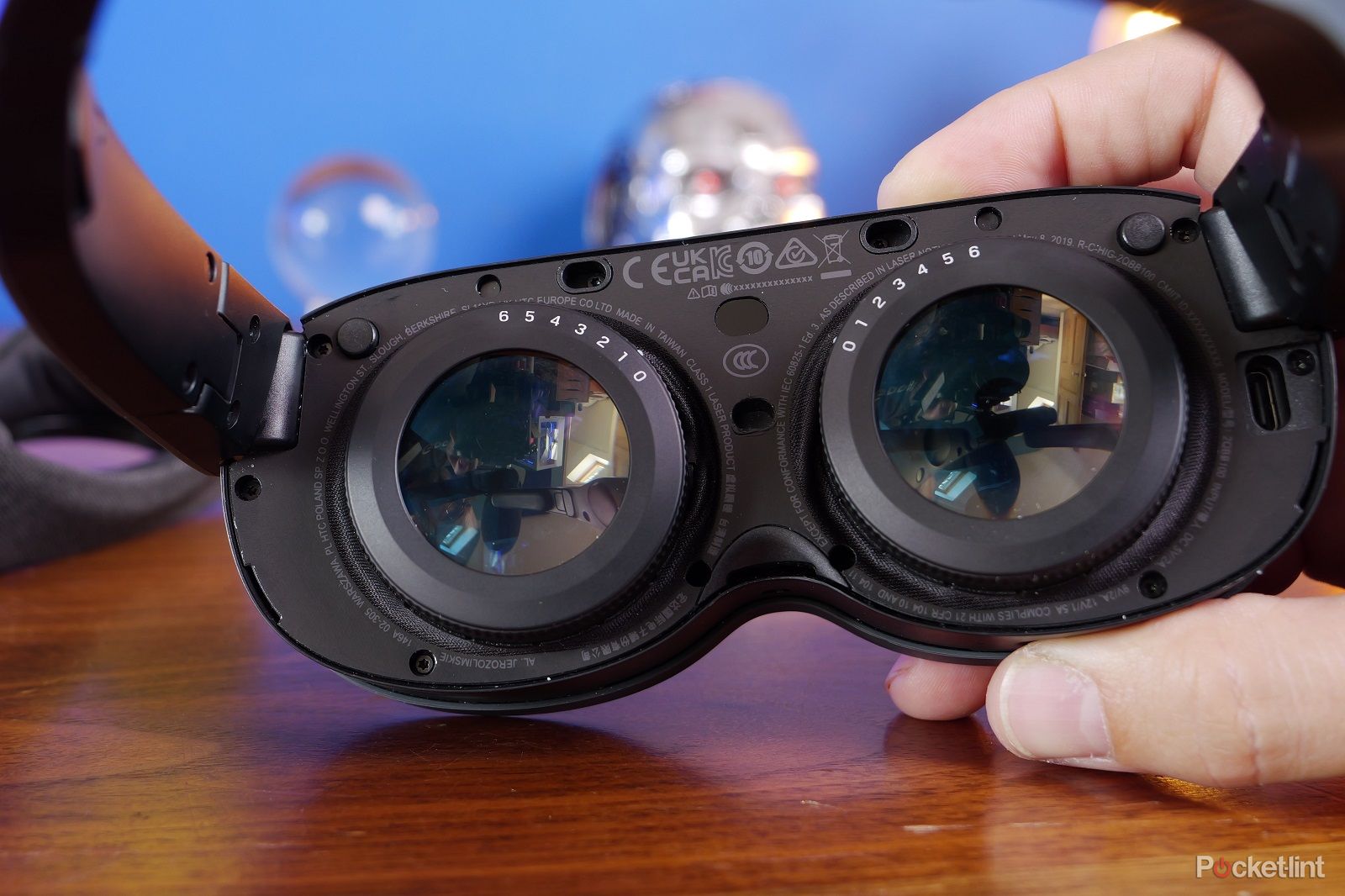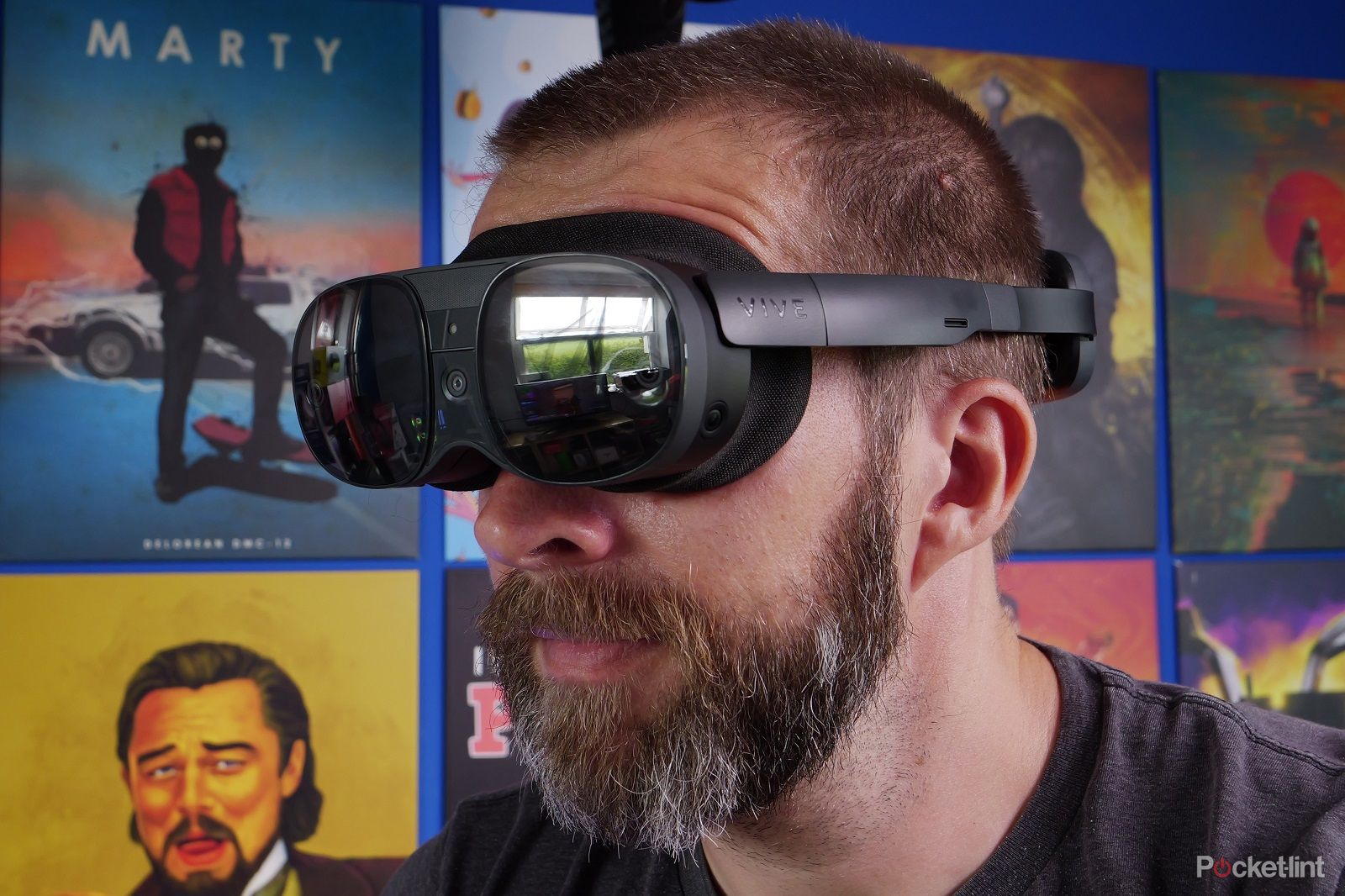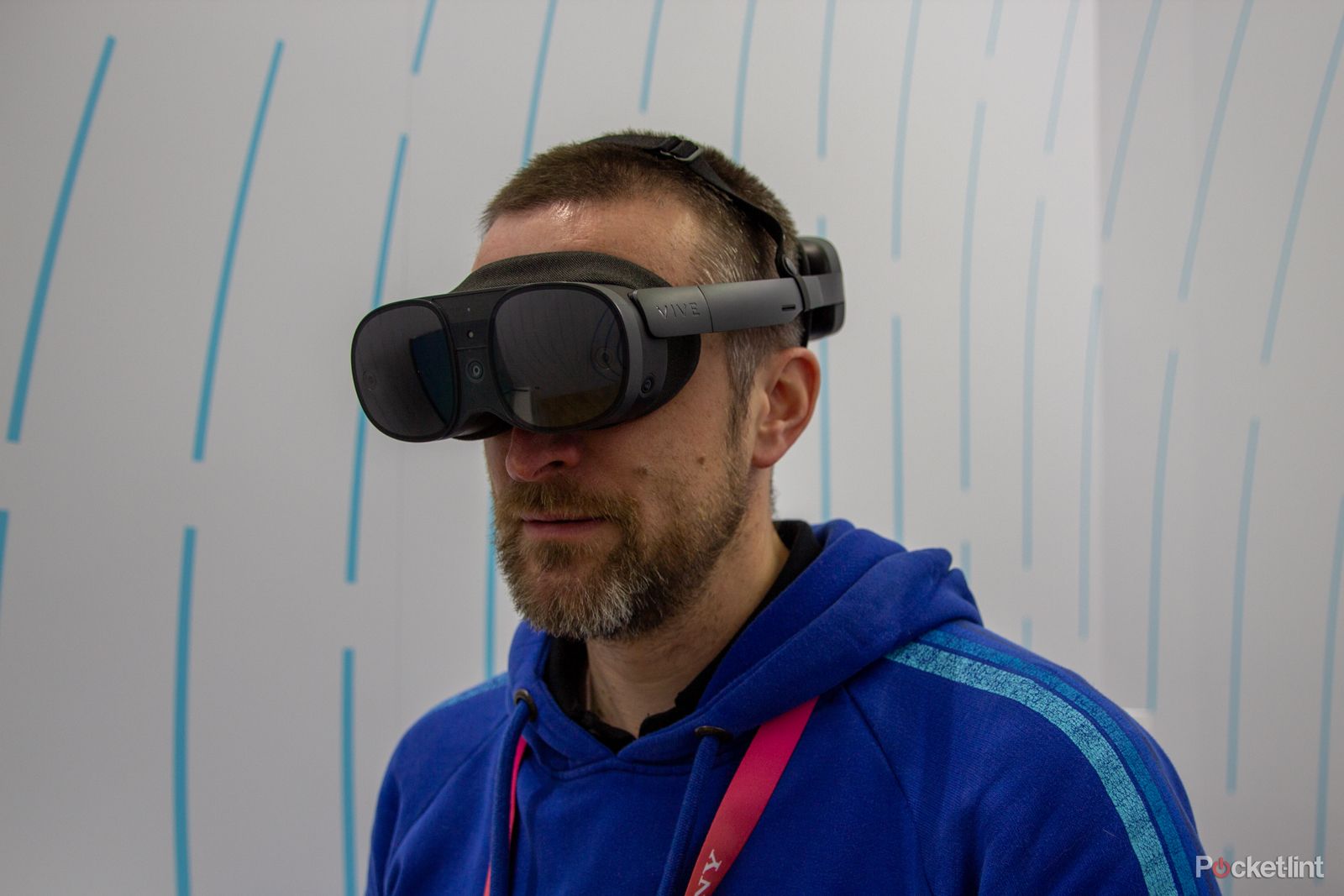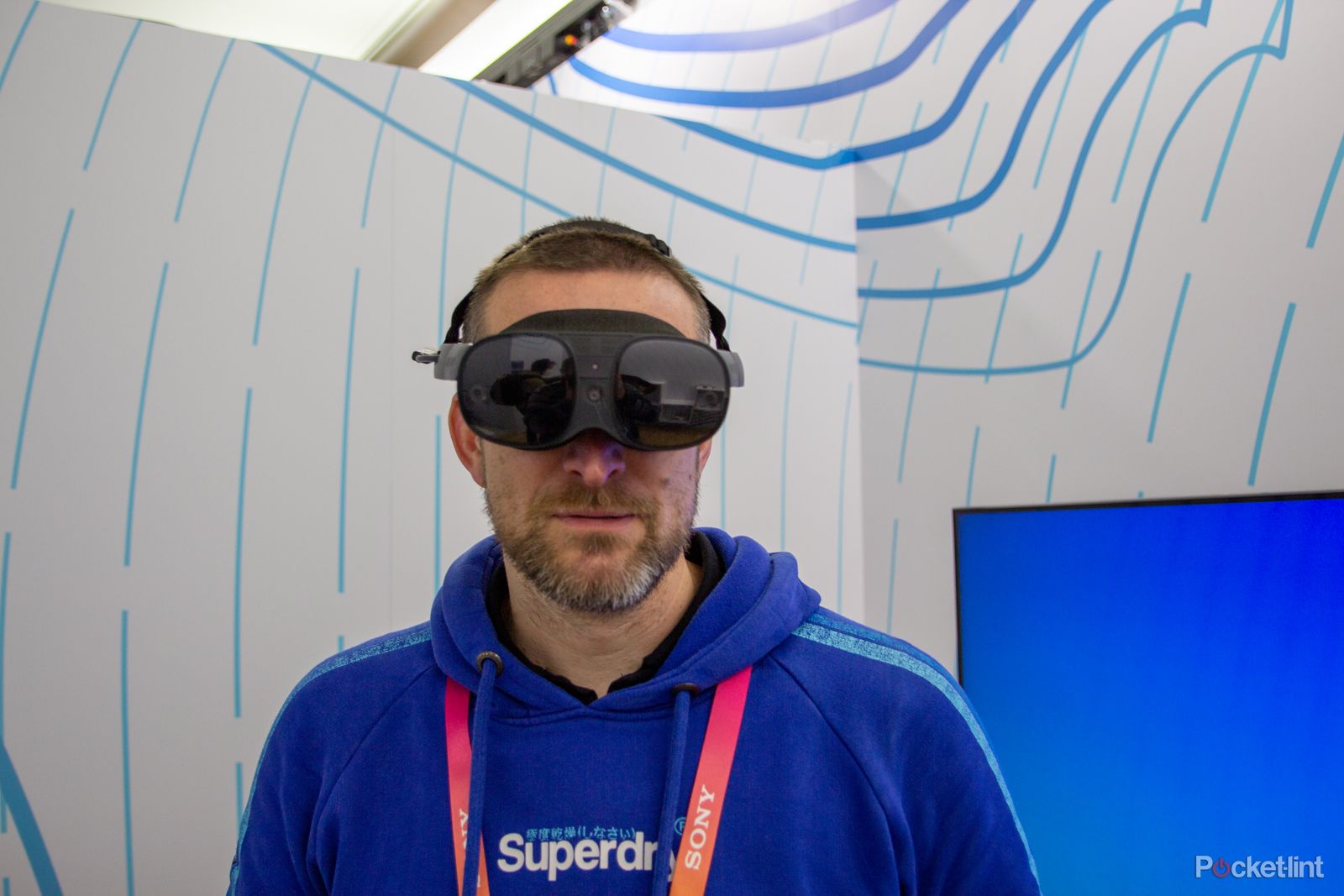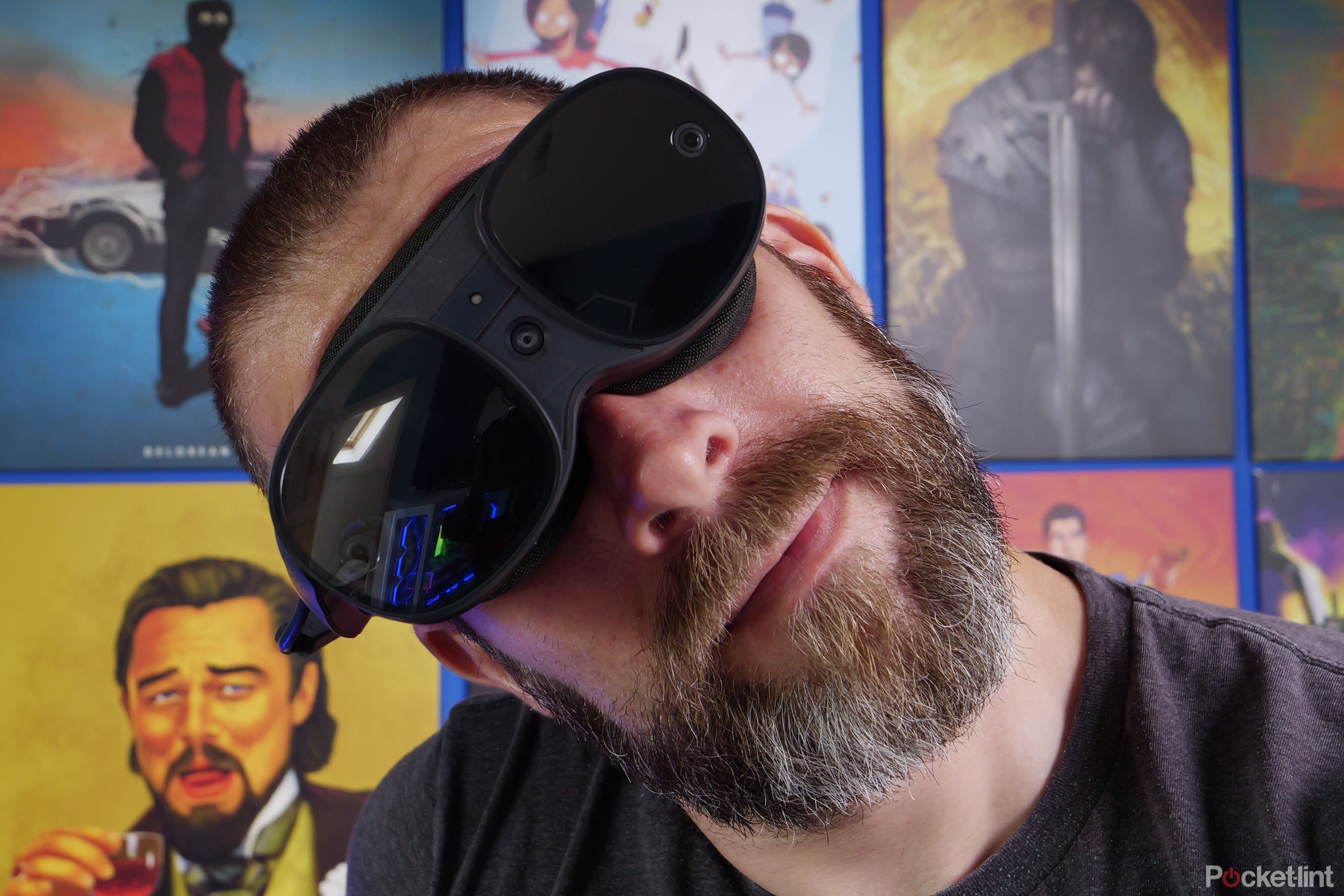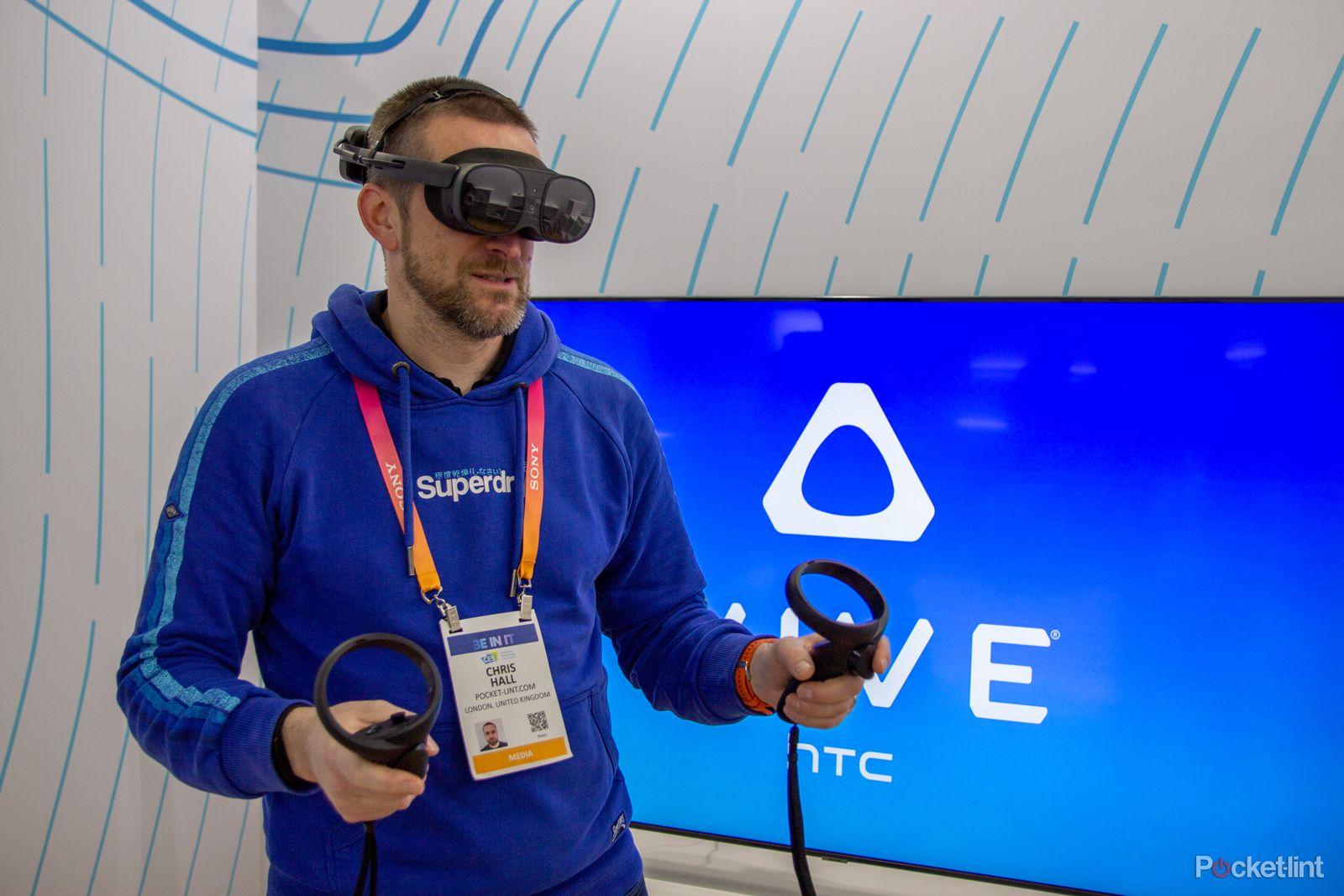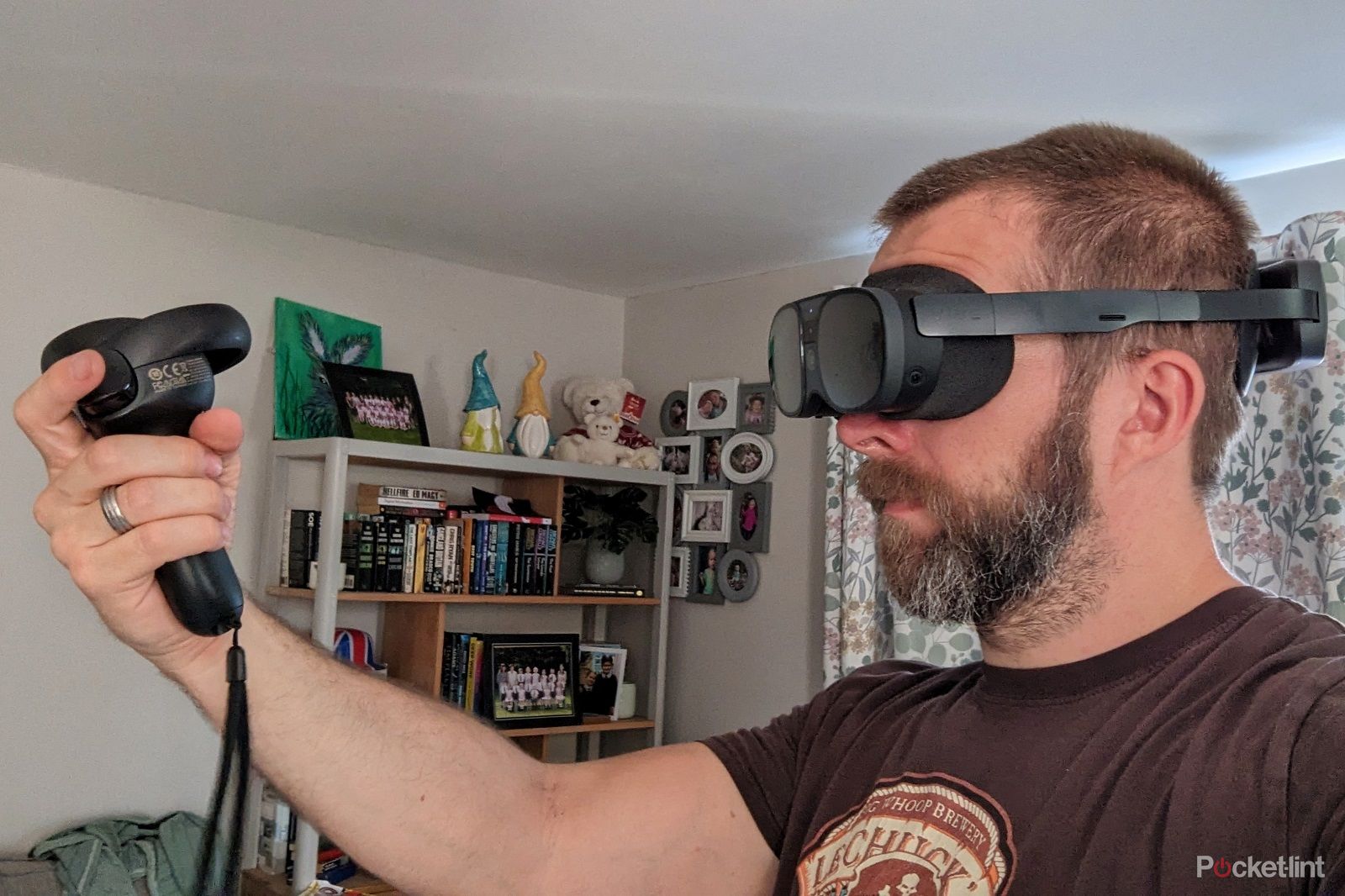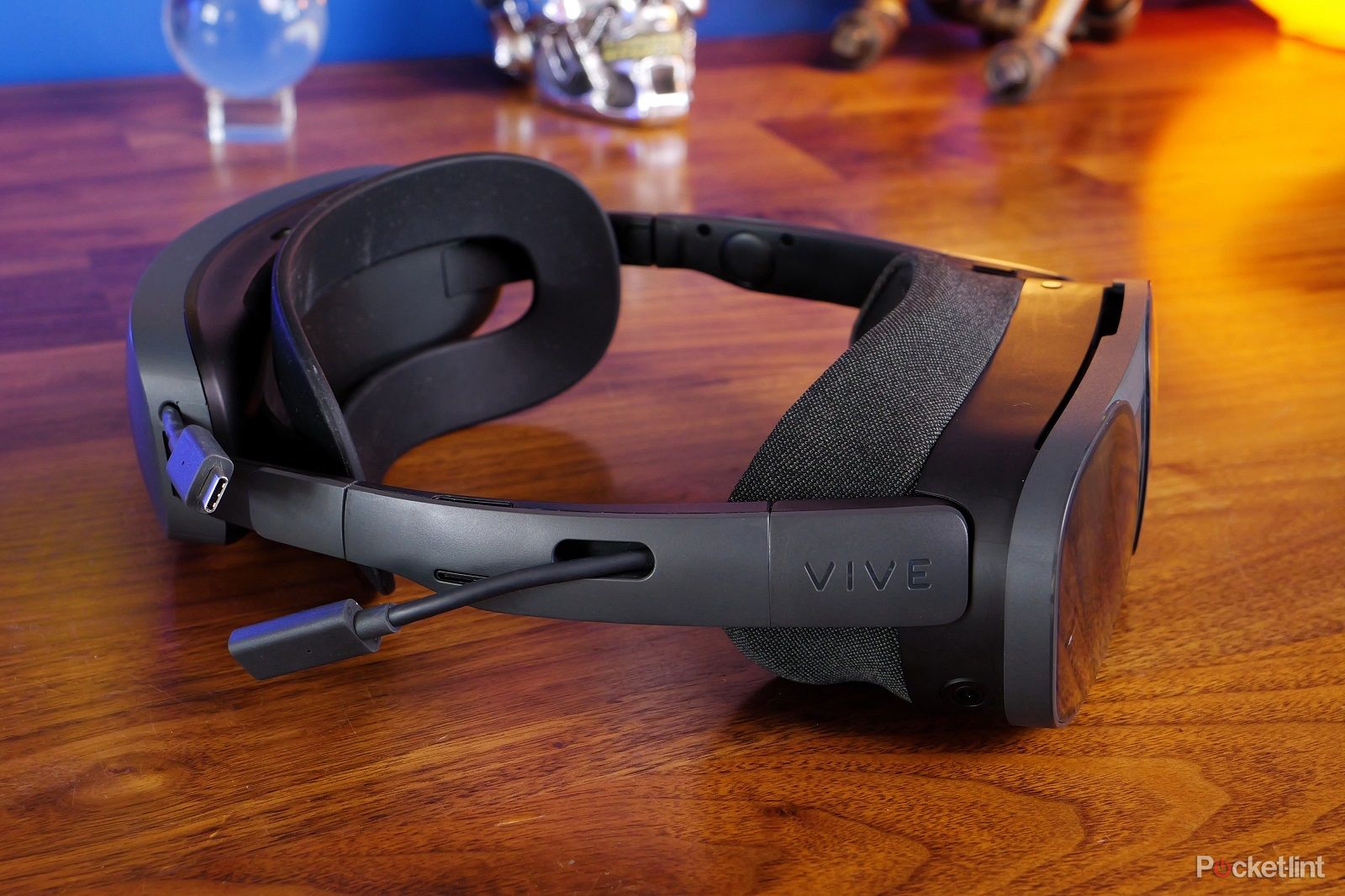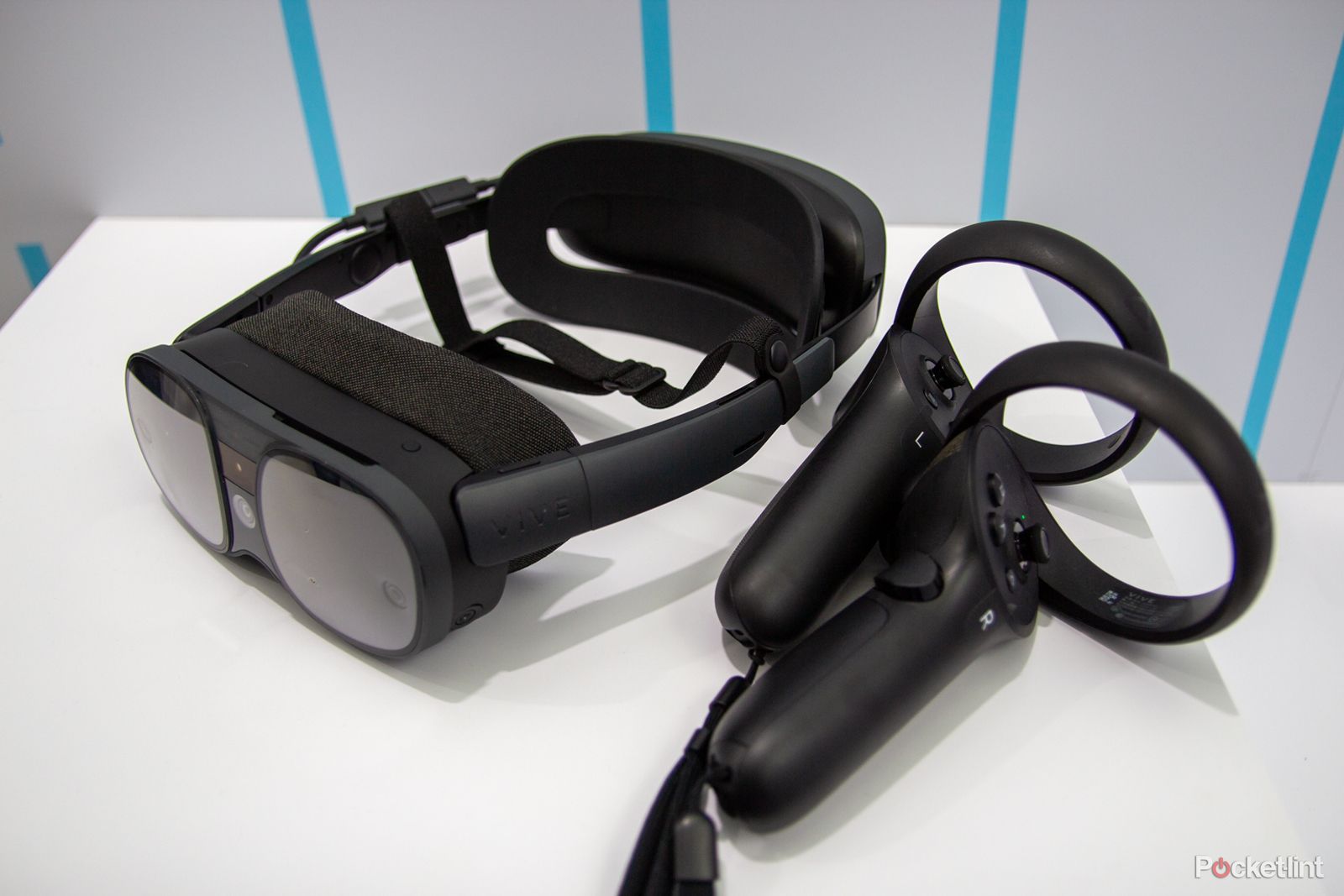HTC, best known for laying out the landscape for modern Android phones in the early 2010s, now focuses most of its energy into VR headsets. Having been one of the big players in premium VR with the original HTC Vive, that family of devices has expanded over the years with several new devices carrying on a solid trend. The Vive Pro 2 was one of the more recent offerings and a great piece of kit for PCVR.
But now the HTC Vive XR Elite steps into new territory, evolving HTC's previous mobile solution, removing the wires and creating a versatile lightweight standalone headset. We got our hands on it at CES 2023 and, more recently, I've had it in for a thorough real-world testing.
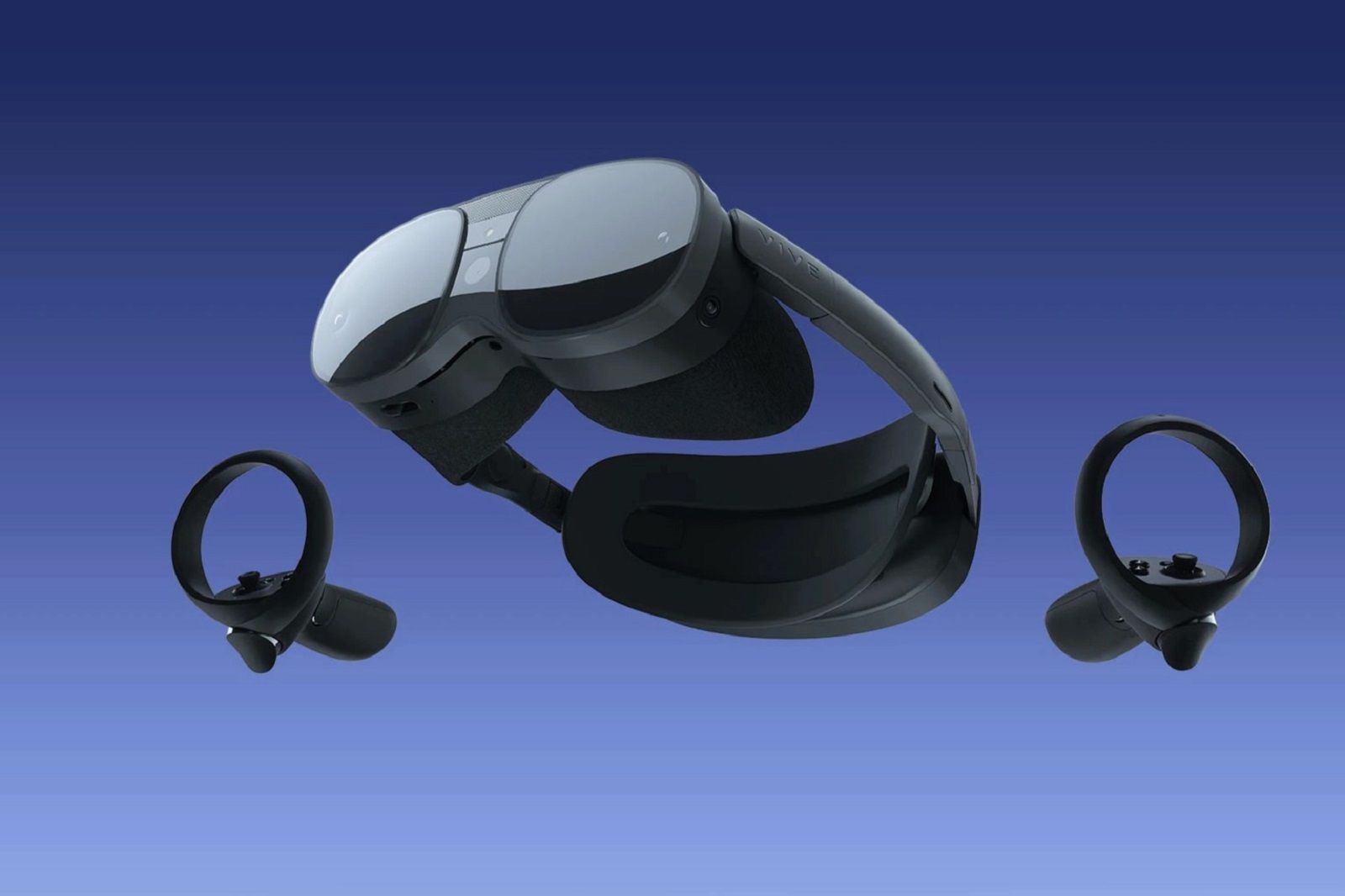
HTC Vive XR Elite
The next-gen headset from HTC offers a versatile design, able to be standalone or connected, with a hot-swappable battery. It's nice and light, while the front RGB camera offer a great passthrough experience to support its XR skills. It's expensive, however, so much will depend on the pipeline of content for this headset.
- Lightweight design
- Hot-swappable battery
- Standalone or tethered
- Great controllers
- Expensive
- Strong competition at cheaper prices
- Currently limited standalone VR games
- Audio performance is lacking
Design
- Modular design
- Optional head strap
The HTC Vive XR Elite takes the Vive Flow as its base design and adapts it into a standalone VR solution.
The previous Vive Flow required a wired connection to a mobile device and was worn like a pair of glasses. The Vive XR Elite looks similar with a compact goggle-style form, but rather than arms like a pair of glasses, now connects to a rear battery pack with a pad for the back of your head.
On the rear of the Vive XR Elite is a dial to adjust the tension, tweaking the tightness of the strap that connects to the front of the device. There's an additional optional head strap that can be added to the headset to go over the top of your head, but the device is meant to be balanced and built so that'll fit most people with ease. Comfort, though, is very much a subjective experience that I'll get to in a minute.
Integral to the design is the pad at the front, the baffle that blocks light around your eyes, while providing a comfortable touchpoint against your face.
This face gasket can actually be removed, so it's easy to change and remove for cleaning.
To look at, this face padding is actually quite a bit shallower and smaller than other headsets I've tried. This means your eyes are closer to the lenses, but there are some other implications.
I've heard other reviewers saying the faceplate interferes with their eyes and with the comfort, or that it let too much light in. I didn't find that to be the case. For me, it was reasonably comfortable and actually did a good job of blocking out the surrounding world. That said I did find that if you're a bit too aggressive with the positioning of the headset you can accidentally detach it from the headset, which then leads to comfort problems.
HTC has said there will be several other face gaskets available to buy including a mixed reality gasket which removes the sides for more real-world visibility and a silicone one that covers the face with a durable material.
However, the Vive XR Elite is actually a modular design, allowing you to slip the battery off and swap the arms to be more like the Vive Flow. In other words more like a pair of glasses than a full-blown headset.
There are arms that click into place and then you can just slip it on. You do, however, need a battery pack or power source while using it in this mode as the front of the headset doesn't have any power of its own.
I'm not too sure about this experience. I found it clamped a little too hard and hurt the sides of my head, plus it was prone to slipping down because the weight at the front which wasn't counterbalanced by the battery at the rear. If you were using the Vive XR Elite laying down then it might be more usable in that mode.
The HTC Vive XR Elite uses the same controllers as the Vive Focus 3, allowing plenty of support for a full range of motions and controls, while also being tracked by the headset.
Other reviewers have commented on these controllers feeling a little cheap in the hand and I'd have to agree. Considering the price point of this Vive headset, the quality here is lacking. They feel flimsy and underwhelming. More than that, I found that the tracking wasn't always perfect during PCVR sessions (more on that soon) and they don't work seamlessly with every experience either.
You can customise the buttons in Steam VR, but it's not as easy to pick up and dive straight into your game library as it used to be.
These design quirks are curious. Obviously, the Vive XR Elite has ditched the tracking base stations of the HTC Vive Pro 2 and other older headsets in favour of inside-out tracking. Because of this, the controllers have to include hardware to help with that tracking so you can't use the original wands. But these Vive controllers just don't feel as good in the hands. The grip isn't bad and the ergonomics are ok, but they're just missing something.
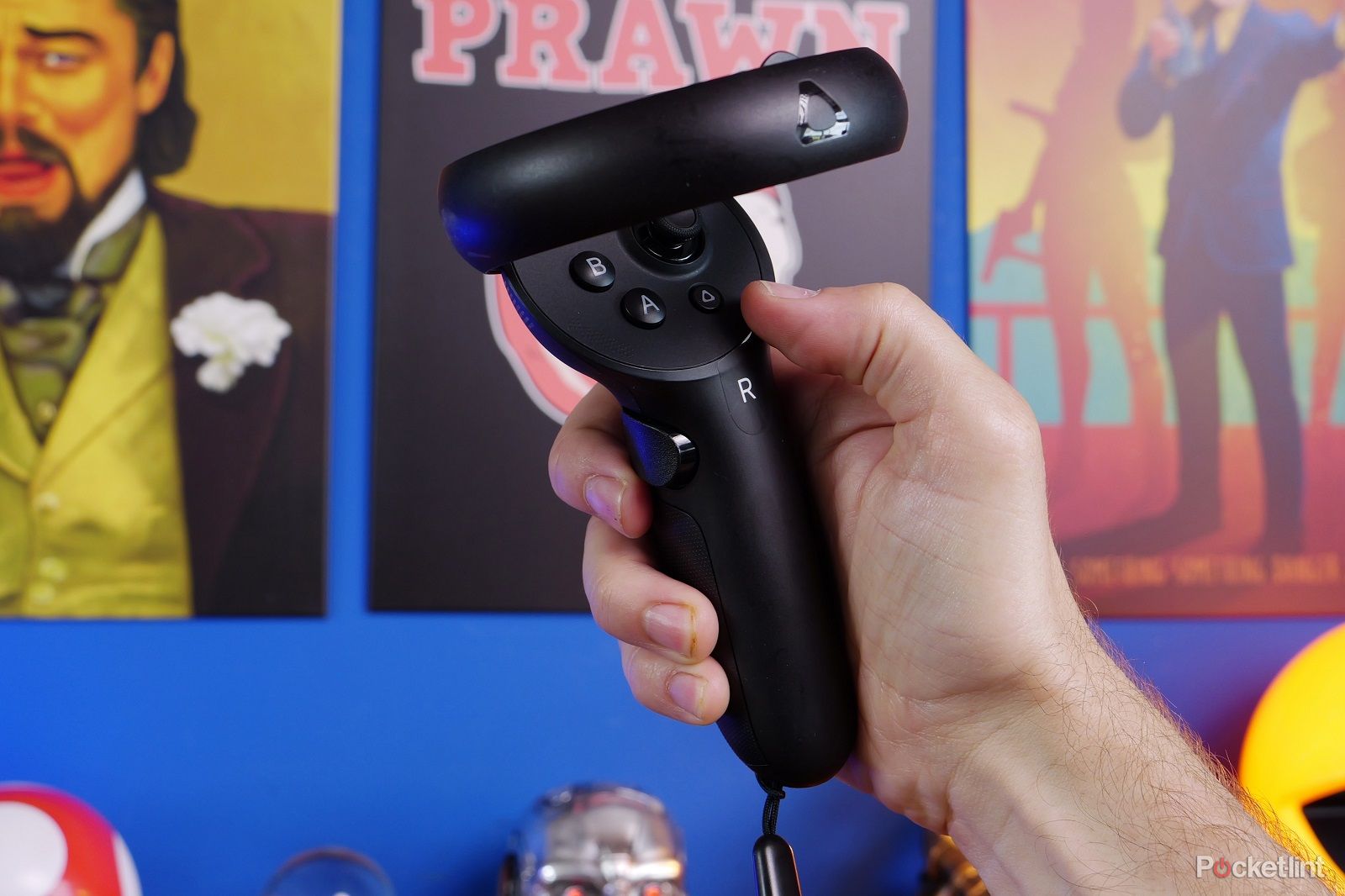
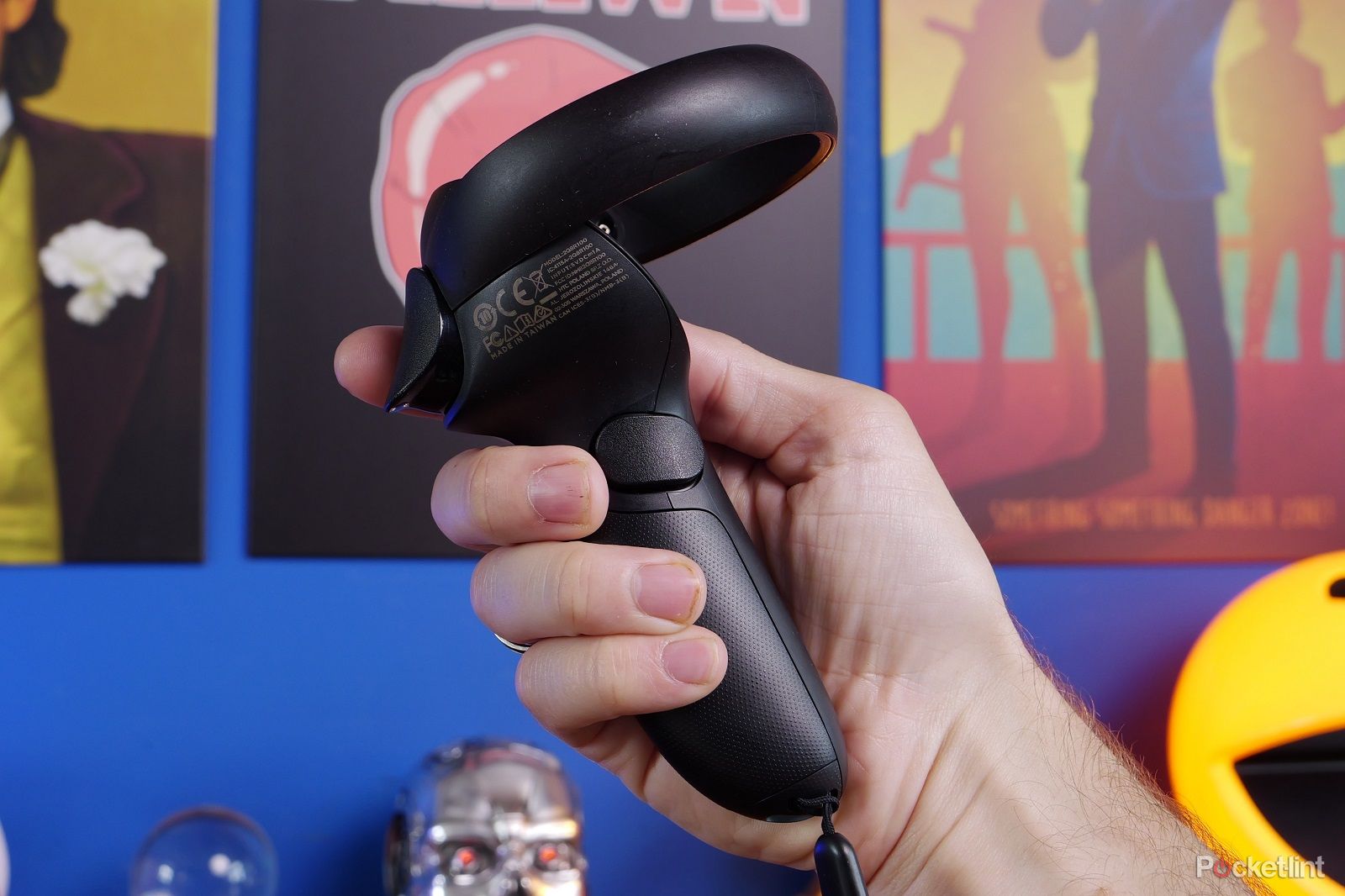
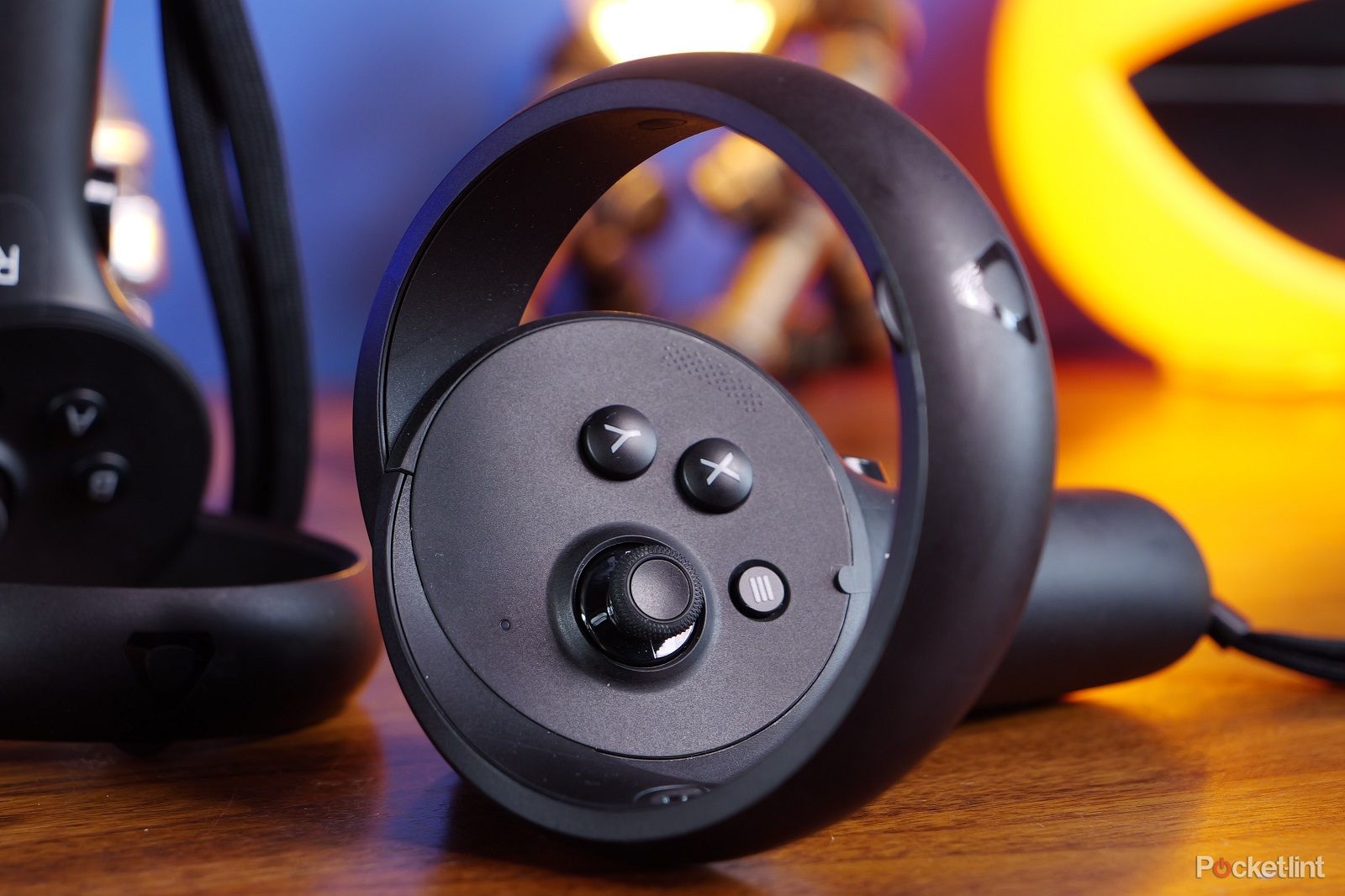
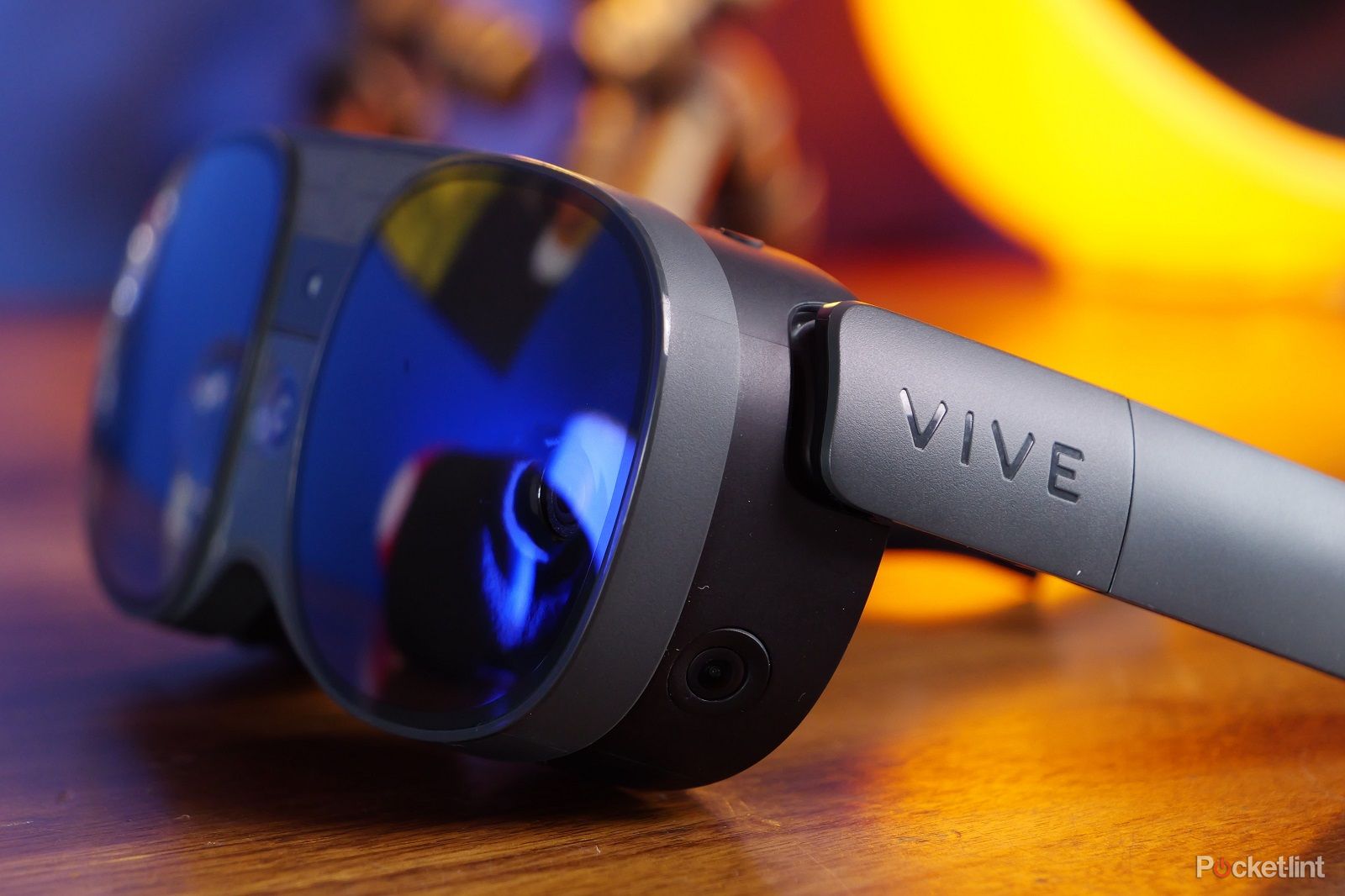
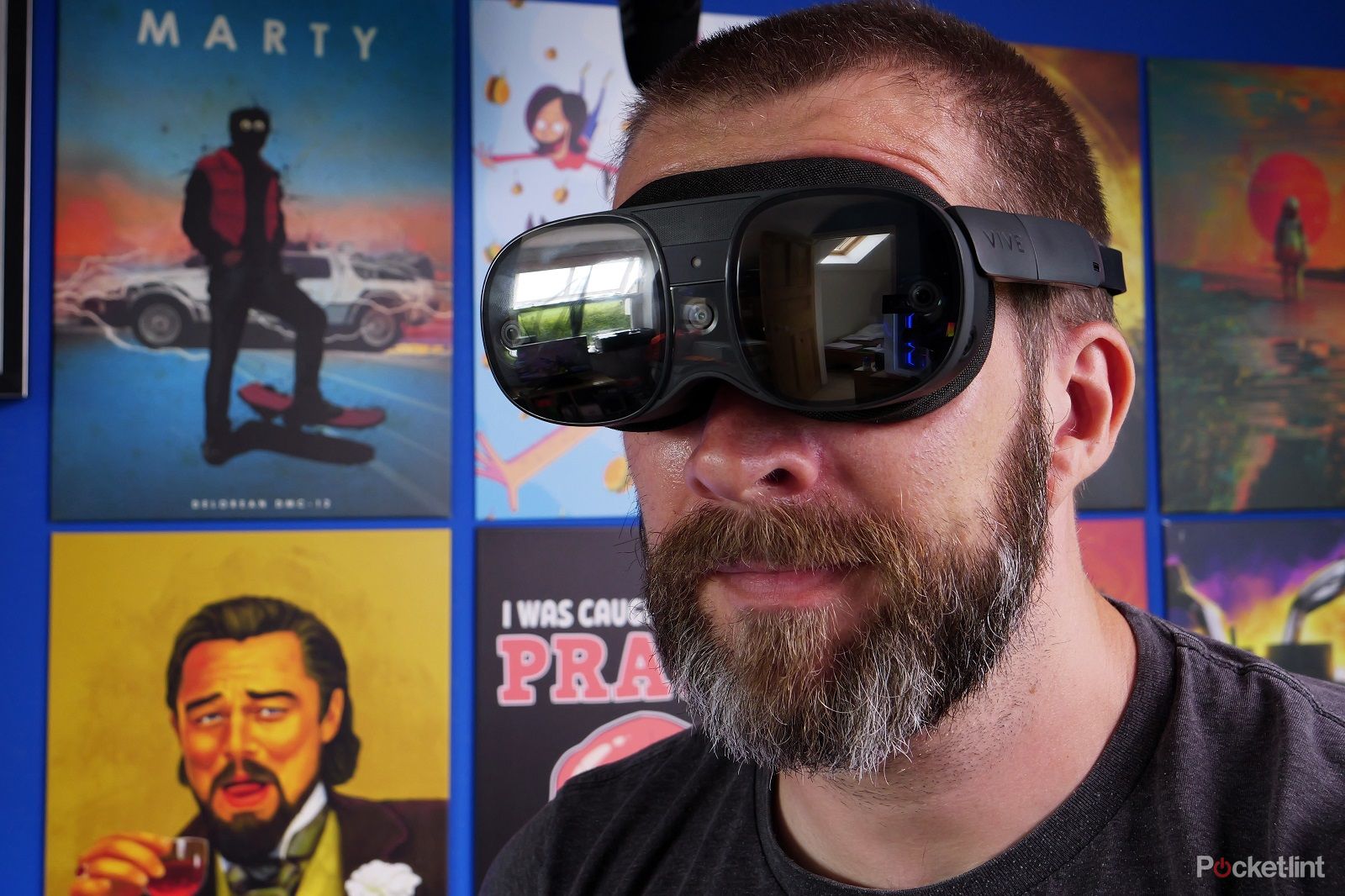
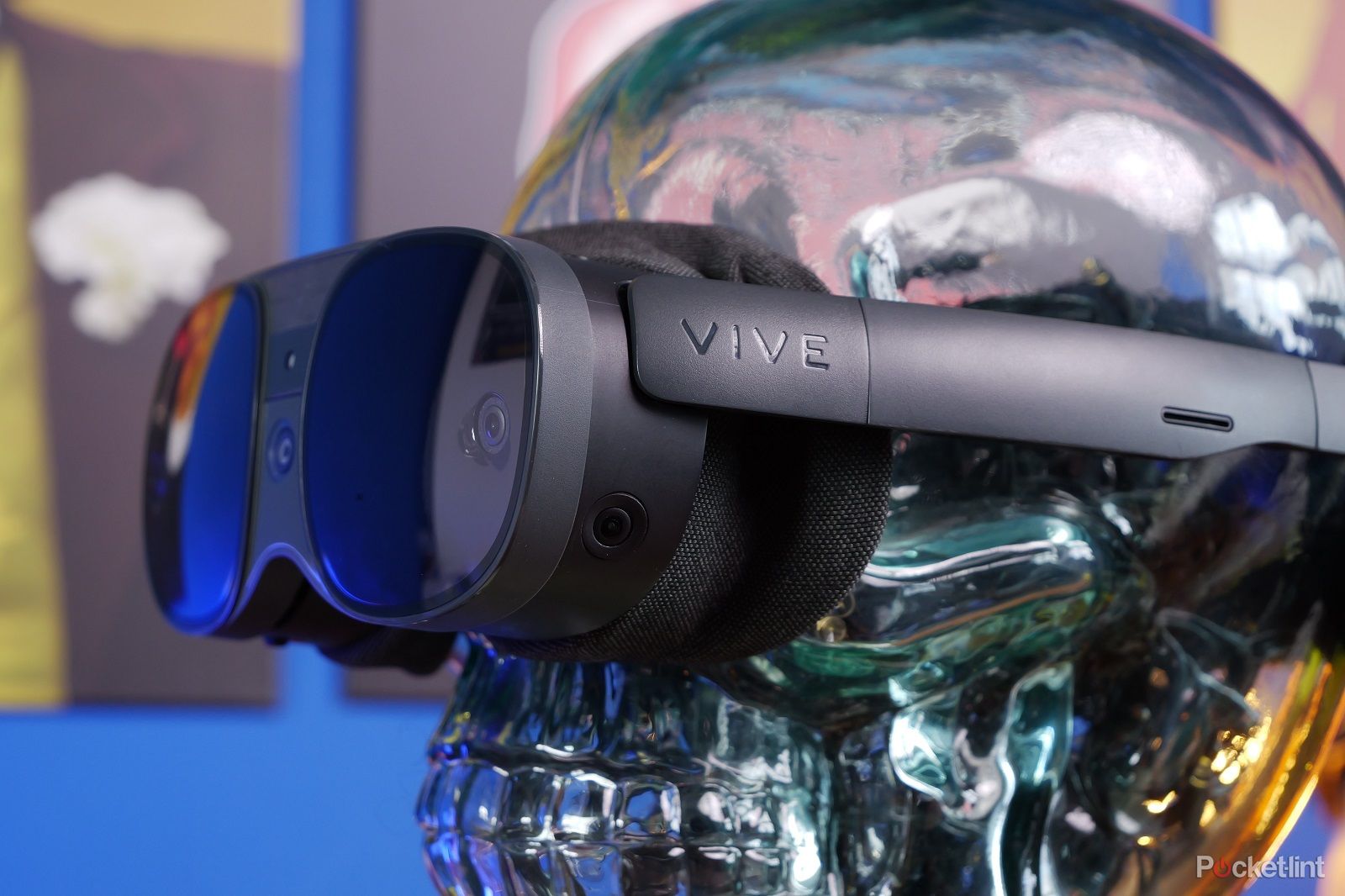
When you consider the quality of the controllers that come with the Meta Quest Pro, where those controllers have their own onboard Snapdragon 662 mobile processors and multiple tracking cameras packed inside, these Vive controllers seem almost archaic.
They're much more similar to the ones included with the original Meta Quest headset and feel dated. They also need charging, individually, with a USB-C cable in order to keep them working. There's no convenient dock included like there is with Meta Quest Pro either, so you need wall plugs for the headset and both controllers - and yet, the Vive XR Elite costs quite a bit more than Meta's headset.
Features
- Adjustable diopters
- Two displays, 1920 x 1920 per eye
- 90Hz refresh rate
- 110 degrees field of view
For us, one of the main appeals of the Vive XR Elite is the design of the lenses for the display. You'll see there are two rings around the lenses, these are adjustable diopters. This means that if you're a spectacles wearer you can theoretically adjust the lenses to focus and account for your prescription.
In theory, this is fantastic because it means you don't need to wear your glasses and the VR headset at the same time. This is always a pain as you often find both sets of lenses get steamed up when gaming or it's easy to accidentally scratch the headset lenses or your glasses. That's no longer the case here. However, I did find it a bit difficult to adjust at first (who knows their exact prescription unless you've just been to the optician?) but if you go through the setup tutorial, it'll talk you through adjusting the lenses and the IPD to get a clear view.
There are two LCD displays built into this headset with custom pancake lenses that offer 1920 x 1920 pixels per eye and a refresh rate of 90Hz. Despite the small size you also get 110 degrees in the field of view.
One thing I noticed is the lenses are quite a bit smaller than those on other headsets I've tried, but because of the shallower face gasket, your eyes actually sit closer to the lenses so you do get a good view of what's happening.
The downside here though is it's far too easy to smudge the lenses, especially when you're taking the headset on and off to deal with PCVR problems.
They're generally clear and crisp, but I did notice that either smudges or bright white scenes or a combination of both would lead to excessive haze. Which is quite distracting unfortunately and ruins the experience.
Still, with the right games and a decent cleaning routine, the visuals are stunning and satisfying.
VR performance
- Qualcomm Snapdragon XR2
- 128GB on-board storage
The headset is powered by the Snapdragon XR2, the same Qualcomm platform as the Meta Quest 2 and the Pico 4. It can be used standalone or tethered to a PC to access more content - it shines most when connected to a PC based on my experience.
I kicked off testing by using it as a standalone device, experiencing content running locally from its own storage. This headset has 128GB of on-board storage which should be enough to install quite a few different games.
Once connected to your Wi-Fi network you can directly access the store and if you're subscribed to Viveport you can take advantage of that to access all sorts of titles too. I dabbled in a few of these, including Loco Dojo, e and a handful of others. The general feeling here is that these games don't make the most of the hardware. Some are older and feel like games from the original Meta Quest era. There are also only around 135 games available to play in standalone mode, so don't expect masses of content.
One of the first experiences I encountered was exploring mixed reality. This uses the RGB cameras on the front of the headset to show you the real world in glorious colour. This isn't as common as you might think with many headsets only offering black and white passthrough as a basic function. However, with XR or MR in mind, there's much greater fidelity in what you'll see when in this mode.
While the demo was great - I painted on a virtual easel in a pretty standard XR demo, then flipped into creating 3D aspects until I'd totally abandoned the painting task I was supposed to be doing and just crafted a virtual hellscape instead - it was something else that demonstrated how good the passthough experience is.
It's worth noting that the Vive XR Elite does support screen mirroring, giving you another option for casting more content. Assuming you can get it to work, of course (I couldn't), and that your device fits the compatibility list.
The PCVR experience
The Vive XR Elite clearly has a few different modes and use cases. You could play standalone titles from Viveport, pop the battery off and use it for watching YouTube videos on a big screen or you could tether it to your PC and use it that way.
PCVR is something HTC has always excelled at. Connecting the headset to a gaming PC and installing the Vive Streaming Hub, you can then quickly and easily connect to the headset and boot up your favourite PCVR games.
With a long USB-C cable connected and more intensive games running, I found a much more eye-pleasing experience. Games like Boneworks, Half-Life: Alyx, Creed Rise to Glory and others looked great and ran really smoothly as well. Of course, you'll need to meet the minimum specs for the best experience. They are:
- Processor: Intel Core i5-4590 equivalent or better
- GPU: NVIDIA GeForce GTX 1060 6GB equivalent or better, AMD Radeon RX 580 equivalent or better
- Memory: 8GB RAM or more
- Operating system: Windows 10
There are some well-thought-out elements to this design as well. Once you're in PCVR mode and connected to your PC, you can see your installed library of games right from the Vive menus on the headset and launch them easily there. Most of the controls translate nicely into Steam VR as well, though I did have some problems where some game controls weren't mapped or recognised and I had to tweak the controls.
The downside is there doesn't seem to be an easy way to view your PC desktop through the headset while tethered. This is a feature of other VR headsets that's pretty commonplace nowadays, so it's a shame not to have that simple control. This in turn leads to some user frustrations.
I found that some games weren't loading but there was nothing to indicate why. Slipping the headset off, I went to look at the computer monitor only to find it was being blocked by the Windows firewall. This always used to be a frustration of VR back in the original Vive headset days - having to take the headset off to deal with problems and then put it back on again. So I'm sad to see it here. This is made worse when you have prescription glasses that you have to put on and take off every time you go through such rigmarole.
However, there are some features of the headset that might help with these annoyances - though there are some caveats.
The internal sensors provide 6 DoF (degree of freedom), with external cameras to provide full-colour passthrough vision so you can see the real world around you and power mixed reality or extended reality experiences - hence the XR in the name.
The passthrough cameras can be activated by a double press of the Vive button on the right controller or the power button on the headset. The cameras offer a pretty decent colour view of your world, but I immediately noticed that the depth perception was off.
With the Meta Quest Pro (which also has colour passthrough) you could turn the passthrough on and wander from room to room with ease. The Vive XR Elite makes this process feel a little unsafe. Things are bigger than they seem or closer or farther away than they actually are. I actually found looking at this view for too long made me feel nauseous, which isn't something I usually suffer with in VR. That said, it is clear enough to be able to make out the text on a PC screen or phone. It's not perfect, but it's good enough.
Generally, the experience in PCVR is much like other headsets, in that it's satisfying visually, you have access to more games and it looks glorious.
I did find though, that the controller tracking wasn't always perfect. Sometimes the controllers would stop tracking for a few seconds or do strange things. This also seemed to be impacted by the virtual guardian barriers, so you need to make sure you have enough space to play.
One thing I really do like about the virtual playspace setup though is the way the borders work. When you set the headset up, you paint around the play area with the passthrough cameras on, so you can easily see where you'll be gaming and make a safe space. The virtual walls then appear when you get too close and if you put your head through that wall, the passthrough cameras will turn on so you'll automatically see where you are.
This, along with the passthrough shortcuts, make it far easier to remain safe while gaming but also not to get too turned around and confused, which is refreshing.
You are meant to be able to use the Vive XR Elite in wireless mode while tethered to a PC, but try as I might, I couldn't get this system to work - so the jury is out on that one.
Sound
The Vive XR Elite comes with built-in speakers. These are built into the arms of the headset, much like those on the Meta Quest. This is good because it helps keep your ears cool and free from interference while you play.
The downside is they're pretty lacklustre. There's no bass and the sound quality isn't amazing. They can get loud enough, but top the volume out too much and the quality is ruined further. HTC hasn't given many options here sadly. You can't plug in a 3.5mm headset as there's no port to do so. You could use a wireless headset or headphones and connect them to your PC, but that's hardly an ideal solution. Fitting a headset over the headband will be uncomfortable too.
Upgrade options
Like previous HTC Vive headsets, the Vive XR Elite can be customised with various additional trackers. The headset has built-in hand tracking (which is easy to use after following the basic tutorial) but HTC says it'll have face and eye trackers available to buy later in 2023 as well.
The lack of extra tracking might be one of the reasons to buy the Vive XR Elite over the other headsets out there. If you're worried about Meta getting your data, for example, then you might prefer that there's no face or eye tracking as standard on this headset vs the Quest Pro, which does have it. Fewer cameras on the controllers might be a good compromise as well.
Verdict
HTC Vive XR Elite leaves us impressed with the lightweight hardware offering and the scope of the controls. This appears to be a flexible headset with versatile use cases. As with all such devices, much will depend on the content that you get access to and your requirements beyond just gaming.
Despite its standalone design, the Vive XR Elite is best suited to PCVR experiences and that's where you'd make the most of it. The experience will be hit-and-miss though and things like face and head shape will greatly change how you get on with the headset. I actually think that if PCVR is your plan anyway, then the Vive Pro 2 might be a better overall experience.
It's certainly great to be wearing a headset that doesn't feel like it's trying to consume your entire head and the passthrough experience from those RGB cameras on the front is really impressive. But the asking price for this headset at $1099 / £1299 / €1399 is eye-watering.
At this price, the Vive XR Elite is more expensive than the Meta Quest Pro, but not as convenient or as feature-rich. Meta also has the advantage of a massive and growing catalogue of standalone VR experiences thanks to the popularity of the Quest 2. So that might well be a logical alternative.

